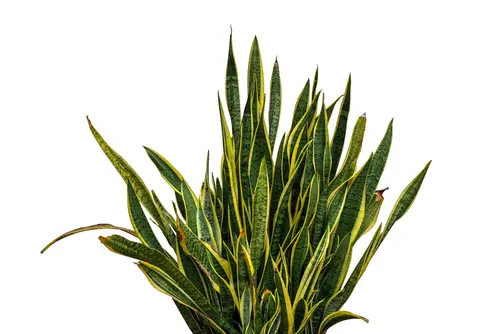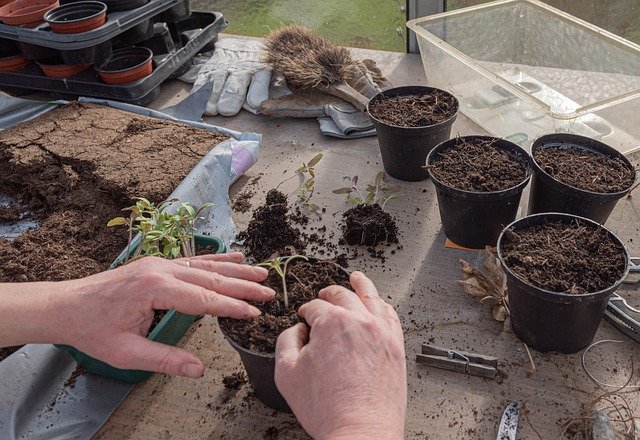Snake plants are a popular indoor houseplant due to their easy maintenance and ability to purify the air. However, sometimes snake plants can develop drooping leaves, which can be concerning to plant owners. One common issue is snake plant one leaf drooping.
Understanding snake plants is essential in identifying and addressing issues such as drooping leaves. Snake plants are succulent plants that store water in their leaves, making them drought-tolerant and low maintenance.
While they can withstand a range of light conditions, they prefer bright, indirect light and well-draining soil. If a snake plant is not receiving adequate light or water, it may develop drooping leaves.
Key Takeaways on Snake Plant One Leaf Drooping
- Snake plants are easy to care for indoor houseplants that can purify the air.
- Drooping leaves in snake plants can be caused by a lack of water or light.
- To fix a drooping snake plant, it is important to ensure it is receiving adequate light and water, and to repot it if necessary.
Also don’t miss:
Understanding Snake Plant

Snake plant, also known as Sansevieria or Mother-in-Law’s Tongue, is a popular houseplant that is native to the West African tropics. It is a succulent that is known for its ability to tolerate low light and neglect, making it a great choice for beginners and those who don’t have a lot of time to care for their plants.
The leaves of the snake plant are long and upright, and they can grow up to three feet tall in some cases. The leaves are also thick and rubbery, which helps them to hold moisture well. The plant is also known for its air-purifying properties, making it a great addition to any home or office.
One thing to keep in mind when caring for a snake plant is that it is sensitive to overwatering. The plant should only be watered when the top two to three inches of soil are completely dry.
When watering, it is important to water deeply until water runs through the drainage hole. This will help to prevent root rot, which can cause the leaves of the plant to droop.
Another thing to keep in mind is that snake plants prefer bright, indirect light. While they can tolerate low light conditions, they will grow more slowly and may become leggy if they don’t receive enough light. If the plant is not getting enough light, the leaves may also begin to droop.
Snake Plant One Leaf Drooping – 5 Common Problems
Snake plants are hardy and easy to care for, but sometimes their leaves can droop or become limp. This can be a sign of a problem with the plant’s environment or care.
Here are some common causes of drooping leaves in snake plants:
1. Overwatering
Overwatering can cause the leaves of the snake plant to droop. This is because snake plants are succulents, which means they store water in their leaves and stems. When they are overwatered, the roots can become waterlogged and start to rot.
This can cause the leaves to become soft and droopy. To prevent overwatering, make sure to let the soil dry out between waterings and avoid leaving the plant in standing water.
2. Underwatering
Underwatering can also cause the leaves of the snake plant to droop. When a snake plant is not watered enough, its leaves can become dry and wilted. To prevent underwatering, make sure to water the plant regularly and check the soil moisture level before watering.
3. Poor Light

Snake plants need bright, indirect light to thrive. If they are not getting enough light, their leaves can become weak and droopy. To prevent poor light, make sure to place the plant near a window that gets plenty of sunlight. If the plant is not getting enough light, consider using a grow light to supplement its natural light.
4. Temperature Changes
Snake plants are sensitive to temperature changes, especially sudden drops in temperature. If the plant is exposed to a cold draft or is placed in a room that is too cold, its leaves can become droopy. To prevent temperature changes, make sure to keep the plant in a room with a consistent temperature and avoid exposing it to cold drafts.
5. Pest Infestation
Pests like spider mites and mealybugs can also cause the leaves of the snake plant to droop. These pests can suck the sap out of the leaves, causing them to become weak and droopy. To prevent pest infestations, make sure to inspect the plant regularly for signs of pests and treat any infestations promptly.
Signs and Symptoms of a Drooping Snake Plant
Snake plants are known for their easy-care nature and rigid leaves that shoot up into the air. However, sometimes these plants may become limp or floppy, which can be a sign of an underlying issue. Here are some signs and symptoms that indicate a drooping snake plant:
- One leaf drooping: If only one leaf is drooping, it could be a sign of physical damage. The leaf may have been bumped or bent, causing it to droop. In this case, the plant will recover on its own, and there is no need to worry.
- Yellowing leaves: If the leaves are turning yellow, it could be a sign of overwatering. Overwatering can cause the roots to become mushy and soft, which can lead to drooping leaves. In this case, the plant should be repotted in fresh soil and watered less frequently.
- Floppy leaves: If the leaves are floppy and soft, it could be a sign of underwatering. Underwatering can cause the leaves to become dry and wilted, which can lead to drooping. In this case, the plant should be watered more frequently.
- Yellow leaves: If the leaves are yellow, it could be a sign of too much direct sunlight. Direct sunlight can cause the leaves to burn and turn yellow. In this case, the plant should be moved to a spot with indirect sunlight.
How to Fix a Drooping Snake Plant
If you notice your snake plant’s leaves drooping, don’t panic. There are several reasons why this could be happening, but the good news is that it’s usually fixable. Here are some steps you can take to get your snake plant back to its healthy self.
1. Correct Watering Practices

Overwatering is a common cause of snake plant drooping. Make sure you’re not watering your plant too frequently or leaving it in standing water.
Snake plants are succulents and can handle periods of drought, so it’s better to err on the side of underwatering than overwatering. Wait until the top inch or so of soil is dry before watering again.
2. Proper Lighting Conditions
Snake plants prefer bright, indirect light, but they can also tolerate low light conditions. If your plant is drooping, it could be a sign that it’s not getting enough light. Move it to a brighter spot, but avoid direct sunlight, which can scorch the leaves.
3. Temperature Control
Snake plants are native to West Africa and prefer warm temperatures. Keep your plant in a room that’s between 60 and 85 degrees Fahrenheit. If the temperature drops below 50 degrees, your plant may start to droop.
4. Pest Control
Pests like spider mites and mealybugs can also cause snake plant leaves to droop. Inspect your plant regularly for signs of infestation, such as webbing or white, cottony growths. If you spot pests, isolate the plant and treat it with an insecticide or a natural pest control solution.
5. Repotting
If your snake plant is severely rootbound, it may start to droop as a sign that it needs more space. Repot the plant in a container that’s one size larger than its current pot, using a well-draining soil mix.
6. Pruning and Feeding
If your snake plant has damaged or yellowing leaves, prune them off with a clean, sharp pair of scissors. This will help redirect the plant’s energy to healthy growth. You can also fertilize your snake plant once a month during the growing season with a balanced, water-soluble fertilizer.
Preventing Drooping Leaves in Snake Plants
Snake plants are easy to care for and can thrive in a variety of environments. However, sometimes they can develop drooping leaves, which can be a sign of an underlying issue. Luckily, there are several steps you can take to prevent drooping leaves in your snake plant.
Choosing the Right Potting Mix

Choosing the right potting mix is crucial to prevent drooping leaves in snake plants. A well-draining soil mix is essential as snake plants are susceptible to root rot. A gritty, well-draining potting mix that contains perlite, sand, or vermiculite can help prevent water from sitting in the soil and causing root rot.
Ensuring Good Drainage
Good drainage is essential to prevent drooping leaves in snake plants. Make sure that the pot you choose has drainage holes to allow excess water to drain out. If the pot doesn’t have drainage holes, it’s best to repot the plant in a pot that does.
Proper Feeding and Nutrition
Proper feeding and nutrition are essential to prevent drooping leaves in snake plants. Snake plants are low-maintenance, but they still need some nutrients to thrive. Fertilize your snake plant every two to three months with a balanced, all-purpose fertilizer. Avoid over-fertilizing, as this can lead to burning of the leaves.
Frequently Asked Questions
How do you fix a drooping snake plant?
To fix a drooping snake plant, it is essential to identify the underlying cause. Overwatering is a common cause of drooping snake plant leaves. In this case, it is necessary to cut back on watering and ensure that the soil is well-draining.
If underwatering is the issue, the plant needs to be watered more frequently. Additionally, repotting the plant in fresh soil can also help revive a drooping snake plant.
What causes snake plant leaves to droop?
Several factors can cause snake plant leaves to droop. Overwatering, underwatering, lack of sunlight, and pests are some of the most common causes. Snake plants are succulents that store water in their leaves, and overwatering can lead to root rot and drooping leaves.
On the other hand, underwatering can cause the leaves to wilt and droop due to dehydration.
Can an underwatered snake plant recover from drooping?
Yes, an underwatered snake plant can recover from drooping with proper care. Water the plant thoroughly and ensure that the soil is well-draining. Additionally, it is crucial to place the plant in a bright spot away from direct sunlight to help it recover.
Is it necessary to cut off a drooping snake plant leaf?
Cutting off a drooping snake plant leaf is not always necessary. If the leaf is only slightly drooping, it can recover with proper care. However, if the leaf is severely damaged and affecting the plant’s overall health, it is best to remove it.
How do you revive a wilted snake plant?
To revive a wilted snake plant, it is essential to identify the cause of the wilting. Overwatering, underwatering, and lack of sunlight are some of the most common causes.
Adjust watering and light conditions accordingly and repot the plant in fresh soil if necessary. Additionally, removing any damaged or dead leaves can help the plant recover.
What are some common reasons for snake plant leaves to bend?
Bending snake plant leaves can be caused by several factors. Overwatering, underwatering, lack of sunlight, and pests are some of the most common causes.
Additionally, overcrowding and lack of nutrients can also cause snake plant leaves to bend. Ensure that the plant is not overcrowded, and provide it with adequate nutrients to prevent bending leaves.

Hey, I’m Lisa and I’ve been an avid gardener for over 30 years. I love writing, talking and living in the garden! Feel free to connect with me on my socials below


